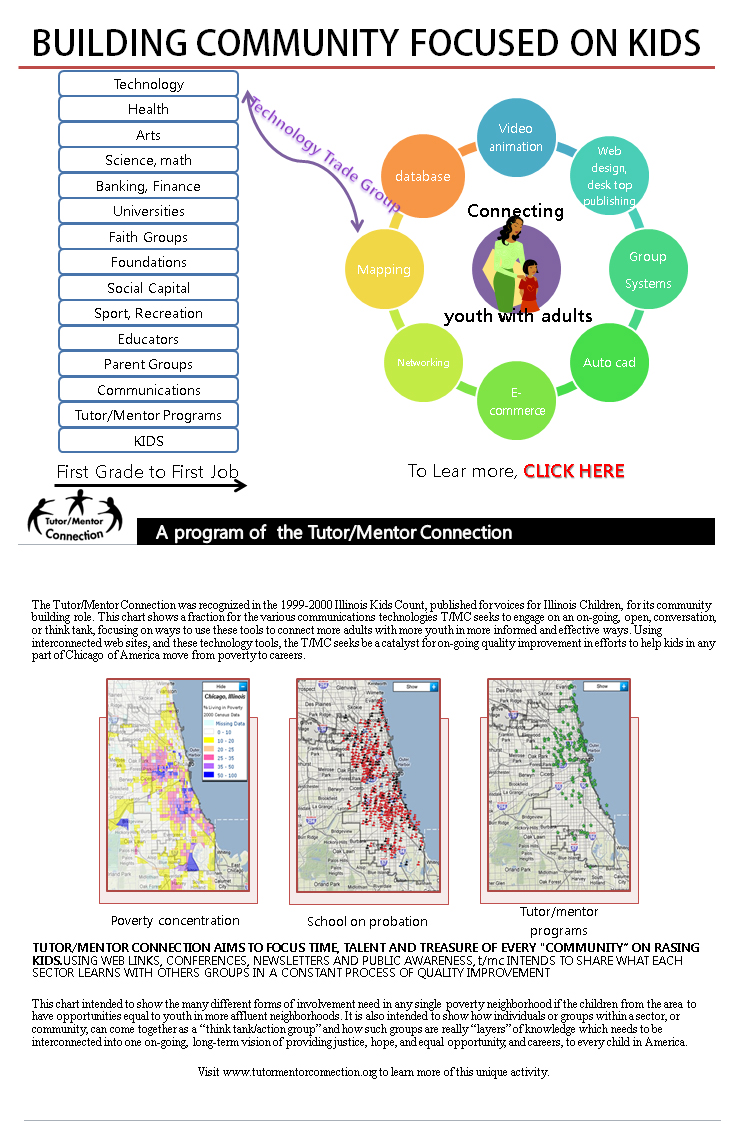Connecting Service and Learning
Finding ways to help more people understand and apply the information we aggregate is a challenge. A solution is to involve youth as early as their middle school years who can not only begin to learn and understand about the gaps between rich and poor, but can learn to help others get involved.
Peter Levine wrote a white paper titled
Civic Engagement and Community Information: Five Strategies to Revive Civic Communication which encourages the aggregation of information and the involvement of students in learning from this information.

This graphic was created by an intern working with
Tutor/Mentor Institute, as part of her own efforts to learn what we do and help communicate her understanding through on-line forums to people in her network and the Tutor/Mentor community.
This
blog list includes many examples of interns who have been converting our ideas into new graphics and videos.
This could be work done by students from many schools and the result would be that more people might be in this conversation thinking of ways to get involved.
This video shows a year-round strategy. The graphics were created by another intern. Part of the strategy are May and November Tutor/Mentor
Leadership and Networking Conferences held in Chicago since 1994. The conferences serve to bring people together to share ideas but they are also intended to help build public awareness and involvement with tutor/mentor programs in Chicago and to draw people to
on-line communities where they stay connected longer.
If communities throughout the US, UK and other countries held similar conferences along the same schedule, and connected members to on-line forums and to Debategraph discussions, the number of people connecting to these ideas and to each other would constantly grow, as would the number who volunteer and donate dollars at various youth organizations in each participating city.